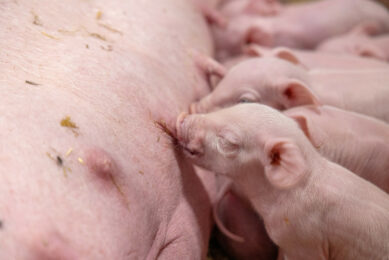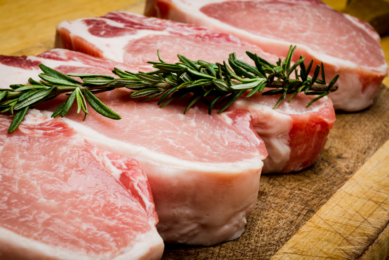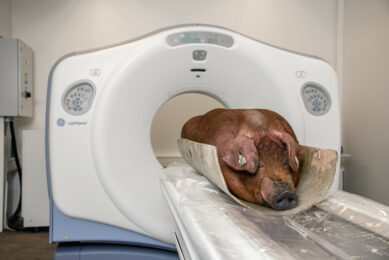New technical terms (III): Genomics

This concludes John Gadd’s series on how the textbooks describe the main new technical subjects. Genomics is a huge and important area. According to John farmers’ livelihoods will be totally bound up with them within 30 years.
In my opinion the textbooks’ description of the new technical subjects are none too clear, due mainly to accurate but over-detailed scientific language. Therefore, first in layman’s language, let me try a definition… Genomics is the study of the genetic material of a cell, which is made up of genomes (nucleotides) which themselves are formed from Deoxyribo Nucleic Acid (DNA). These chemicals are formed into spiralling chains – millions of them joined as base pairs – called a double helix. While some of these base pairs are the same for all pigs, some are not and are called Single Nucleotide Polymorphisms (SNPs). The differences matter and those that have been sequenced (‘mapped’ or identified) can be used to identify Quantitive Trait Loci (QTLs). QTLs influence a wide variety of inherited traits.
Over 1,300 QTL’s appear every year
Rather too much jargon for me – but there we are. Since the pig genome was identified in 2009 and published in 2012, over 1,300 QTLs appear every year and affect production traits. The proportions will change of course as the research develops. This research enables geneticists to identify genes which are harmful, such as inherited diseases and disorders and removing them from the helix. And, when required in livestock production, improving performance sufficiently by inserting the beneficial ones such as growth, litter size, resistance to disease etc.
Also read: New technical terms (I): Epigenetics
Genetic modification: The overall view
This is what genetic modification (GM) is all about. With these impressive advantages it may be difficult to understand the degree of initial hostility by the public that unforeseen errors (under the media’s sombre umbrella of ‘genetic manipulation’) could lead to disfigurement, embryonic deaths and the wiping out or crippling of whole populations – including that of humans. The hesitancy in the minds of the public still exists, despite little evidence so far of significant side-effects. But once the enormous potential and actual advantages of removing certain acute inherited diseases and disorders from human medicine strikes home, then the public will surely change its tune. It cannot afford not to do so.
Genetic modification: The pig industry’s view
The worldwide pig industry has been slow to incorporate genomic information. One of the primary reasons is that commercial pigs are crossbred and their nucleus source is typically purebred. There is therefore a difference between purebred performance and crossbred performance. However… As Dr Nick Boddicker, Genesus, explains on the company’s website: “Genomics can bridge the gap if the breeding company has access to genomic and phenotypic (pig carcass) information on their crossbred animals.” The breeding companies are addressing this.
Genomic pig research is not only speeding up genetic progress, it also opens up other possibilities. Nutrigenomics involves the effect of nutrition on the expression of genes (how genes work) and so improves performance. In addition, immunogenomics deals with the question how genomics affect immune status and there’s also reproductive genomics, where certain genes in the breeding female respond to management in gestation influence not only embryonic survival, as we have known for some time, but also and what is new, the subsequent performance of her progeny right up to slaughter weight.
Also read: New technical terms (II): Nutraceuticals
The future for pigs
The cost of genomic research is coming down, so new developments will be available on the market sooner than expected. Sufficient to affect the way we are farming pigs now. For example genomics can improve evenness of weight and conformation at slaughter. This is important, we are now in the more industrialised era of the pig needing to fit the processing equipment and not the equipment having to fit variations of pig shapes. Future contracts will increasingly embrace such criteria as pigs will be increasingly sold on pre-pack cuts, not carcasses or part-carcasses, with the packing done on the processing line. It will also sell more pork. Evenness is a vital first step towards this.











